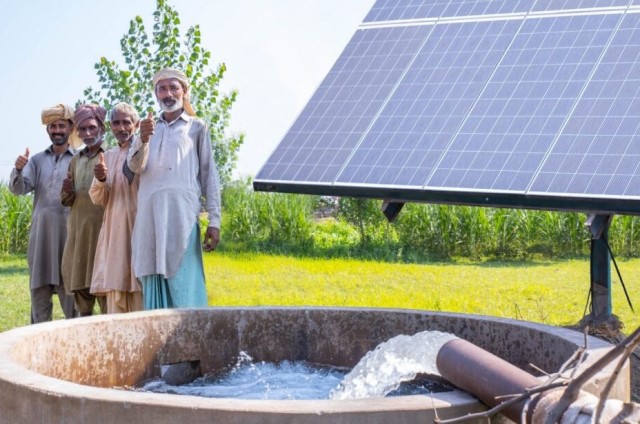
India’s Steel Fist In Mining Resources
Unrestrained and many devious ways of exploitation of natural and human resources were the reasons for the Western countries, with Great Britain in the spearhead, to build colonies across the continents. Of all the colonies that ever existed, India was most shamefully drained of resources by the British during their two-century rule between 1757 and 1947.
Utsa Patnaik, professor emeritus at Jawaharlal Nehru University, has said in a paper that the British had salted away approximately $45 trillion from India during their unwelcome stay. This, incidentally, amounts to 17 times the current GDP (gross domestic product) of the UK. Perhaps, Patnaik erred on the side of caution. For, Oxfam International says in a recent report that the British empire on which the sun has nearly set not only drained India of $64.82 trillion but also not stopped at doing any tricks to derail industrial development of the colony.
To mention a couple of instances of devious ways of robbing the wealth of the ‘jewel in the crown’ of the British empire. First, instead of paying for imports of silk, textiles, rice, etcetera with silver or gold, East India Company would collect taxes here and instead of channelling that for local development would use the proceeds of taxes to pay for imports. So, the British were buying Indian goods without paying their own money. Following the takeover of India by the British Raj, which saw the rapid decline of East India Company, the colonisers introduced Special Council Bills which importers must buy with gold and silver and use the Bills to pay for purchases of Indian goods. On presentation of such Bills by Indian suppliers, they would be given rupee, collected as taxes instead of silver or gold.
Economic exploitation apart, the colonial period was marked by large-scale human trafficking – first, as slaves and then following the abolition of slavery in Great Britain in 1833 as indentured labourers. What all the bad things happened to India during colonial subjugation were also experienced by the other colonies. On achieving Independence, all these countries realised the importance of proper harnessing of natural resources under official oversight. Resource nationalism becoming a catchword across the world today has its roots in the long struggle of many nations, including India to be in total control of wealth gifted by nature.
Resource nationalism gives expression of a country’s ambition to use various minerals mined locally for value addition instead of sticking to the easy option of selling resources in their crudest form in the world market. Value addition to minerals leads to rises in GDP, creation of employment and building of infrastructure, besides giving a heft in the global market. In fact, the countries with well-developed mineral processing industries from steel to aluminium to copper have not only not liked the idea of resource rich nations taking steps forward to build facilities to become producers of alumina, an intermediate product derived from bauxite and used in smelters to make aluminium, if not the metal and metal products at value chain zenith.
India had experienced during the long British rule how the country got denuded of resources from cotton to jute to silk to indigo. Not only agricultural commodities, the colonial rulers in total control of foreign trade used to ship large volumes of coal, iron ore and mica from India to support their industries at home. At the same time, they discouraged development of Indian industries, as confirmed by the experience of industry doyen GD Birla while he was trying to set up jute mills in Calcutta.
Much earlier to Birla’s discomfiture, the English would not stop doing anything to discourage the Tatas to put up a steel plant at Jamshedpur. The then chief commissioner of Indian railways Sir Frederick Upcott said disparagingly: “Do you mean to say that Tatas propose to make steel rails to British specifications? Why, I will undertake to eat every pound of steel rail they succeed in making.” Sir Frederick must now be turning in his grave to find that the once leader in steel Great Britan managed to make only 4m tonne of crude steel in 2024 against India’s 149.6m tonnes in 2024. Certainly, India would not have been able to come this far had not Sir Jamsetji Tata and his two sons shown courage to overcome all obstacles put in their way to build a steel plant.
ALSO READ: China’s Growing Appetite For Steel
Ironically, Tata Steel’s UK arm is now involved in saving the Port Talbot steel plant by building a 3m tonne electric arc furnace (EAF) — incidentally, the mill will be among the largest of its kind in the world — at an investment of 1.25bn sterling pound, supported by a 500m pound investment by the UK government. To be commissioned by 2027-end, the scrap-based plant will secure 5,000 jobs in the UK as it will cut carbon emissions by 50m tonnes over a ten-year period. Yet another arm of the group Tata Motors earlier came to the rescue of the iconic British enterprise Jaguar Land Rover when it bought the business from Ford Motor Company in 2008 at a cash consideration of $2.3bn.
In a sense, history has come full circle – from the scorns that the Englishmen had for the original promoters of the Tata group to the latter rescuing struggling big British businesses in modern times. Resource nationalism was far from being thought of in the 1880s when Jamsetji Tata thought of a steel plant using locally mined iron ore and steel. All this became possible because of the fortitude of some Indian industry pioneers to use locally found resources to make final products. That was resource nationalism in action.
The concept, however, started gaining in currency since the mid-20th century with the newly independent resource rich countries contemplating gaining control, if not ownership of resources for their own use to benefit the local economies and the people. However, in several former colonies, particularly South Africa, natural resources from gold, platinum, coal to iron ore continue to be largely owned by foreign mining groups such as Anglo American, Glencore and BHP Billiton. Nationalisation of already owned resources by foreign entities is not the desirable answer since the former colonies will need foreign capital and technology for economic development.
At the same time, resource owning countries must have close oversight over the mining sector to ensure that ore extraction is done in an environment friendly way. Sustainable mining demands scientific disposal of waste such as waste rock, overburden, tailings, slime, coal refuse and spent oil shale. In fact, pressure should be brought to bear upon the mining companies to make usable value-bearing products out of waste in line with circular economy.
Foreign and domestic mining groups will be heard complaining about the unconscionable time concerned governments will take in allocation of deposits and then a further long wait for all the required sanctions, including relating to forests and environment to materialise. Let us, however, not forget that the worst form of exploitation of workers, including loss of life from mine accidents and degradation of nature from pollution of rivers and other water bodies to high levels of carbon emissions have always been associated with the mining industry. Government intervention at every stage, from grant of leases of deposits to putting a cap on yearly raising of ore at a mine to obliging mine owners to practise safe operations has helped in cleaning up the sector to a great extent, as we have seen in India.
Soon after Independence, local businessmen drew inspiration from prime minister Jawaharlal Nehru describing dams, steel plants and large industries as “temples of modern India” to build plants to process locally found resources instead of exporting these and import finished products. In the beginning, only a few Indian business houses had the capacity to mobilise funds and access technologies to set up large industries. This made the government to build large steel plants and power projects in several parts of the country and infrastructure, including sea ports and airports.
What has helped India to become the world’s second largest producer of steel and aluminium is the abundant availability of the required raw material, specially iron ore, bauxite and non-coking coal. Resource nationalism and reversing the colonial practice of denuding the country of its natural resources by exports were the principal factors for impressive growth of many industries post-Independence. At the same time, considering the country’s large resource base, it should not at any time again disincentivise export of low grades of iron ore. Supplies of high quality bauxite from Odisha mines being sufficiently large to meet requirements of alumina refineries, the government should step in to revive exports of low-grade bauxite from Gujarat.
The logical aspiration of all once colonies is to get the optimum value from natural resources, minerals or agricultural items by way of value addition. From Indonesia in southeast Asia to Guinea in Africa want raw materials to be processed locally for the benefit of the economy and jobs. This is certainly not to the liking of Western and Chinese processing Industries which have made fortunes through their engagement in the total value chain. But common sense has started prevailing on these enterprises as they have started building Industries wherefrom raw materials are traditionally imported. The process can only gain in momentum.



